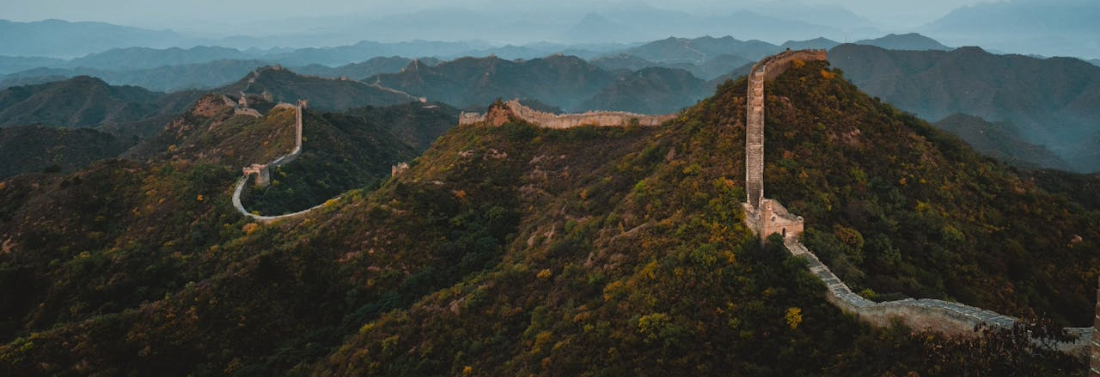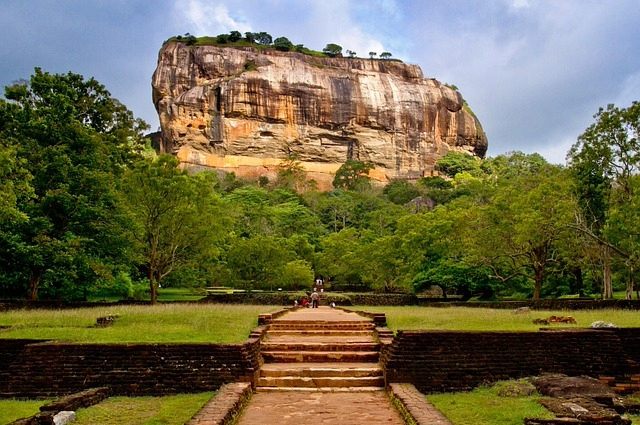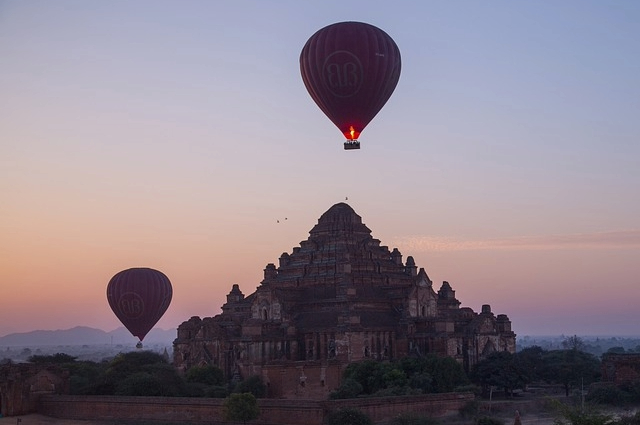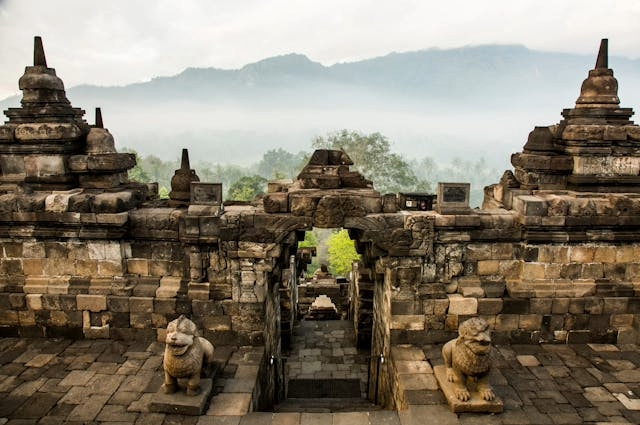Asia’s Ancient Ruins
Asia, a continent rich in history and culture, boasts some of the most magnificent ancient ruins in the world. Each site, with its unique architecture and historical significance, reveals the cultural richness and architectural ingenuity of ancient Asia, inviting visitors to step back in time and immerse themselves in the legacy of these magnificent empires.
Angkor Wat, Cambodia
Angkor Wat, the largest religious monument in the world, is an architectural marvel nestled in the jungles of Cambodia. Built in the early 12th century by King Suryavarman II, this temple complex served as the heart of the Khmer Empire. The intricate carvings depict scenes from Hindu mythology and also offer a testament to the grandeur of Khmer architecture.
Angkor Wat offers an opportunity to witness a magical sunrise over the main temple, casting an ethereal glow on the ancient stones. The elaborate bas-reliefs adorning the walls narrate tales of gods and demons, while the tranquil atmosphere of the surrounding moat and lush jungle adds to the site’s mystical charm.
The Great Wall of China, China
No list of Asia’s ancient ruins would be complete without mentioning the Great Wall of China. Spanning over 21,000 kilometres across rugged terrain, the Great Wall of China is a feat of engineering and perseverance which showcases the genius of the Ming Dynasty. Initially built to protect against invasions, the wall has stood the test of time, embodying the strength and resilience of ancient China. The ancient site is one of the world’s most iconic wonders and largest historical sites, as the Great Wall winds along the mountain ridges north of the capital. Walking along its ancient stones offers breathtaking views of the surrounding landscapes and a deep sense of historical significance.
Visitors to the Great Wall can explore well-preserved sections, perfect for hiking and photography. The watchtowers and battlements that dot the wall provide insight into ancient military strategies, while the opportunity to walk in the footsteps of emperors and soldiers adds a sense of historical significance. The Great Wall also offers panoramic views of the majestic landscapes it traverses.
Borobudur, Indonesia
Borobudur, a Mahayana Buddhist temple in Central Java, Indonesia, is the world’s largest Buddhist temple. Built in the 9th century during the reign of the Sailendra Dynasty, Borobudur is a testament to the spiritual and artistic achievements of ancient Java. Its nine stacked platforms are adorned with over 2,500 relief panels and 500 Buddha statues, each telling a story of enlightenment. This UNESCO World Heritage site still remains an important pilgrimage destination for Buddhists worldwide.
Visitors to Borobudur can marvel at the central dome, crowned with a large stupa symbolising Nirvana and explore the intricate scenes depicting the life of Buddha. The panoramic views of the surrounding mountains and rice fields from the temple’s upper terraces offer a moment of tranquillity and reflection.
Ayutthaya, Thailand
Once the bustling capital of the Kingdom of Siam, Ayutthaya in Thailand is a city of ruins that tells the story of its former glory. Founded in 1350, Ayutthaya thrived as a centre of commerce and culture until it was destroyed in the 18th century. The city flourished under the rule of several monarchs, becoming one of the most prosperous trading ports in Asia and attracting merchants from across the region. The architecture of Ayutthaya was unrivalled, with majestic temples, towering pagodas and grand palaces adorning its skyline. Therefore, these structures, built with intricate designs and ornate decorations, reflected the kingdom’s wealth and power.
Bagan, Myanmar
Bagan, an ancient city in Myanmar, is a treasure trove of Buddhist heritage, boasting over 2,000 Buddhist monuments scattered across a vast plain. Established between the 9th and 13th centuries, Bagan served as the capital of the Pagan Kingdom, a pivotal period in Myanmar’s history. This golden era witnessed a flourishing of art, culture and religion, with Bagan emerging as a major centre for Buddhist learning and pilgrimage.
The architectural diversity of Bagan is striking, with temples ranging from brick structures to towering monuments adorned with intricate carvings and gilded stupas. As visitors explore the labyrinthine pathways of Bagan, they encounter hidden gems at every turn, from secluded meditation caves to secret shrines tucked away. The serene beauty of the landscape also adds to the mystical allure of the ancient city.
Sigiriya, Sri Lanka
Located in the island nation of Sri Lanka, the ancient rock fortress of Sigiriya awaits. Rising dramatically from the lush jungle to a height of 200 meters above central Sri Lanka, Sigiriya is also a UNESCO World Heritage site renowned for its architectural ingenuity and natural beauty. Built in the 5th century by King Kashyapa, this fortress served as a royal palace adorned with frescoes and gardens.
Sigiriya offers visitors the chance to experience the grandeur of the Lion’s Gate, the Mirror Wall adorned with ancient graffiti and the vibrant Sigiriya Frescoes. Visitors can ascend the steep staircases to reach the summit, where the ruins of the royal palace reveal breathtaking views of the surrounding countryside. The journey to the top is both physically rewarding and spiritually enriching, as each step brings you closer to the heart of this ancient marvel.
Asia’s ancient ruins awaits you…
Exploring Asia’s ancient ruins unravels the stories of bygone eras that shaped our world. From the majestic temples of Angkor Wat to the serene beauty of Borobudur, these ruins offer a window into the past and a glimpse of the civilisations that once thrived.





Sorry, the comment form is closed at this time.